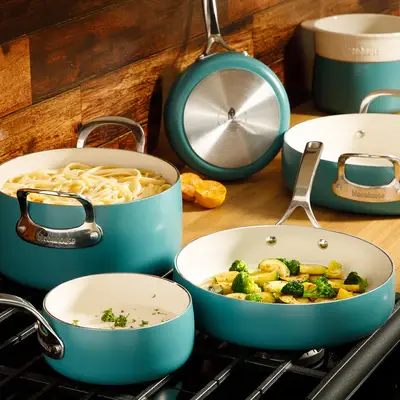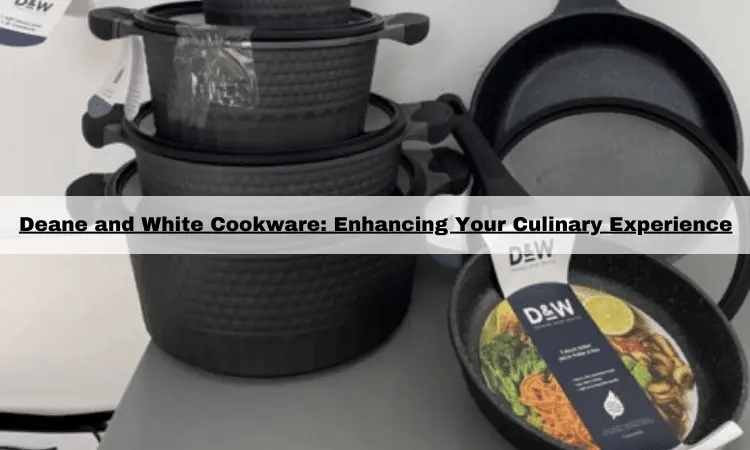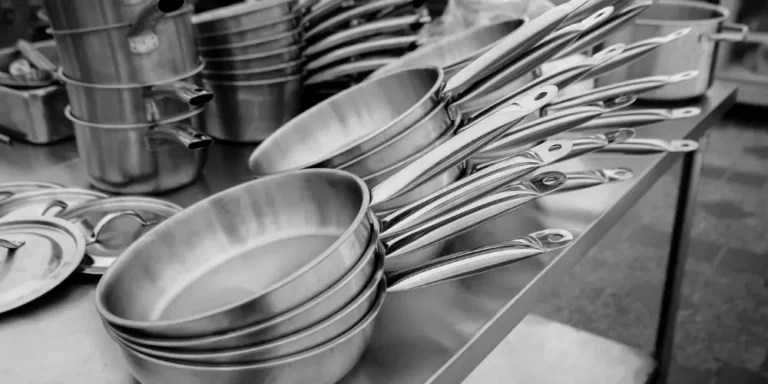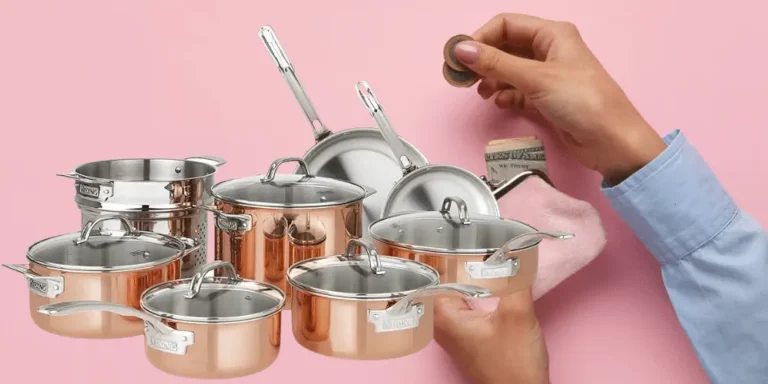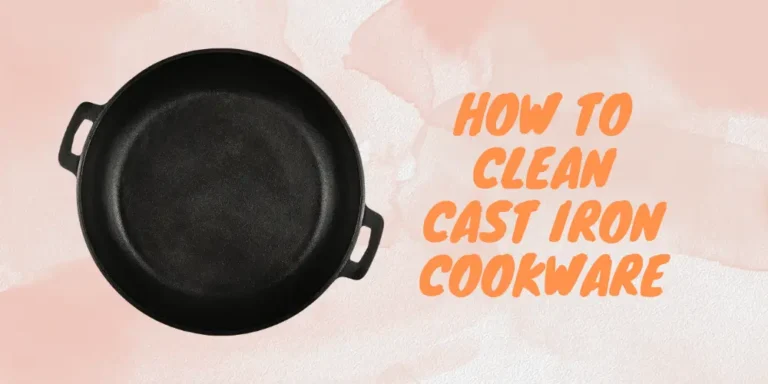Granite Cookware Pros and Cons: Insights Personal Experience
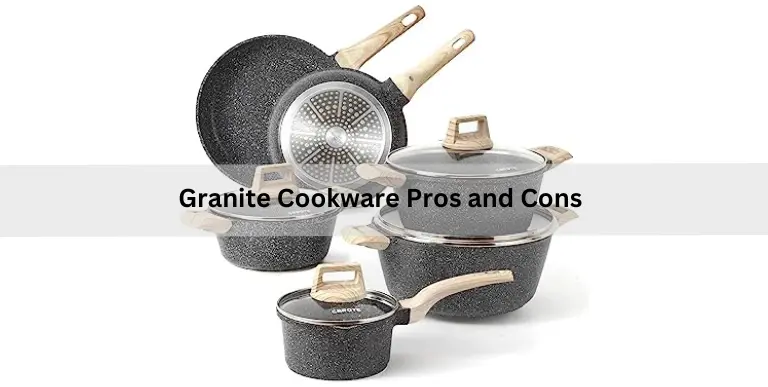
Cookware plays a crucial role in every kitchen, and choosing the right cookware can greatly enhance your cooking experience. As someone who has personally used and benefited from granite cookware, I am excited to provide you with a comprehensive guide that combines my own insights and expertise. In this article, we will delve into the key factors to consider when buying granite cookware, provide tips for caring and using it effectively, address common misconceptions, and highlight its advantages for home chefs.
The cookware we choose has a significant impact on our experience in the kitchen as well as the outcomes of our cooking. With so many materials and options available, it’s essential to understand the key factors that differentiate them. One type that has gained popularity in recent years is granite cookware. Made from a blend of natural granite stone mixed with stainless steel, it provides a unique set of characteristics worth exploring.
Understanding Granite Cookware
Granite cookware is a type of cookware that blends granite particles with a stainless steel alloy. It is known for its durable, non-stick properties and structural strength. Here are some key points to understand about granite cookware:
Composition:
Granite cookware typically combines 70-80% granite powder and a stainless steel alloy. The granite particles contribute to the cookware’s non-stick properties, while the stainless steel alloy provides structural strength.
Manufacturing Process:
Manufacturing granite cookware involves fusing the granite powder with the stainless steel alloy under extreme heat and pressure. This process creates a smooth, solid surface slab that can be molded into various shapes to make different cookware pieces.
Benefits of Granite Cookware:
Durability: Granite cookware is known for its durability and resistance to scratches and abrasions. The stainless steel alloy provides strength and prevents warping or deformation of the cookware.
Non-Stick Properties: The granite particles in the cookware create a non-stick surface, which reduces the need for excessive oil or butter during cooking. This can result in healthier cooking and easier cleanup.
Heat Distribution: Granite cookware typically offers excellent heat distribution, ensuring even cooking and reducing the risk of hot spots.
Versatility: Granite cookware is available in various shapes and sizes, catering to different cooking needs. There is a wide range of options, from skillets to steamers and Dutch ovens.
Popular Brands:
Some well-regarded granite cookware brands to consider are Swiss Diamond, Anthropic, and PureChef. These brands offer a range of granite cookware products, including skillets, pans, pots, and specialty cookware such as steamers and Dutch ovens. When considering a purchase, it’s recommended to research and compare different brands and their specific product offerings to find the best fit for your needs.
It’s important to note that while granite cookware is generally considered safe for cooking, it’s always a good practice to follow the manufacturer’s instructions and guidelines for proper usage, care, and maintenance.
Pros of Granite Cookware
- Heat Distribution: Granite conducts heat exceptionally evenly across the entire cooking surface.
- Non-Stick Properties: The granite content brings naturally effective release to foods without added oils or fats.
- Durability and Longevity: Granite is incredibly scratch and crack-resistant. With proper care, pieces can last decades.
- Aesthetics and Style: The stylish, modern aesthetic and subtle colors add beauty to any kitchen.
Cons of Granite Cookware
- Weight and Handling: Denser than some materials, granite ware is noticeably heavier, requiring more heavy lifting effort.
- Price Range: Quality granite sets carry higher initial costs than conventional aluminum or stainless steel pans.
- Maintenance and Cleaning: Hand washing is ideal care, but some find this process inconvenient versus easier cleanup of non-natural materials.
- Potential for Food Sticking: While superior non-stick overall, very sticky or burnt cookware contents still risk post-preparation residue adhesion issues.
Cookware Comparison: Granite vs. Stainless Steel vs. Non-Stick vs. Cast Iron vs. Ceramic
| Comparison | Granite | Stainless Steel | Non-Stick Cookware | Cast Iron | Ceramic Cookware |
|---|---|---|---|---|---|
| Release Factor | Superior non-stick abilities | Requires added fats/oils | N/A | N/A | N/A |
| Coating Material Concerns | N/A | Potential degradation over time | Health concerns around coating materials that can degrade faster over time than the stone | N/A | Potential cracking concerns with rapid heating/cooling cycles |
| Temperature Conductivity | Conducts temperature evenly | Potential uneven hotspots | N/A | N/A | N/A |
| Maintenance | Requires less care | N/A | N/A | Requires regular maintenance | N/A |
| Heat Retention | Retains heat longer | N/A | N/A | Retains heat well | N/A |
| Durability | Highly durable | Highly durable | Highly durable | Highly durable | Less durable, prone to cracking |
| Versatility | Suitable for various cooking methods | Suitable for various cooking methods | Suitable for various cooking methods | Suitable for various cooking methods | Suitable for various cooking methods |
Choosing the Right Granite Cookware:
Drawing from my personal experience, I understand the importance of assessing several key features when purchasing granite cookware:
Construction Materials and Durability: Look for cookware made from high-quality materials with a thick layer of granite for optimal durability and heat retention. This ensures long-lasting performance and even heat distribution.
Handle and Grip Quality: Comfortable and ergonomic handles are essential for a pleasant cooking experience. Based on my own use, I recommend selecting cookware with well-designed handles that provide a secure grip.
Compatibility with Stovetop Types: Ensure that the cookware is compatible with your specific stovetop, whether it’s gas, electric, induction, or ceramic. This firsthand knowledge will help you make an informed decision.
Budget Planning: While budget is an important consideration, I have found that mid-priced options from reputable brands often offer the best balance of quality, durability, and affordability.
User Reviews: Personal experiences shared by other users can provide valuable insights into the reliability, performance, and satisfaction of different granite cookware models. I encourage you to read user reviews and testimonials to make an informed choice.
Related Content Might You Like:
- Elevate Your Culinary Craft with La Sera Cookware
- Deane and White Cookware: Enhancing Your Culinary Experience
Caring for Granite Cookware
Having used granite cookware myself, I have learned the importance of proper care and maintenance. Here are some essential care tips that I can personally vouch for:
Seasoning New Pieces
Before using a new granite cookware piece, I recommend lightly coating the interior with oil and heating it briefly. This simple step enhances the cookware’s non-stick properties and improves its performance.
Cleaning Approach
Based on my own experience, I suggest hand washing granite cookware in warm water using a gentle sponge or cloth. Avoid abrasive materials and harsh cleaning agents that can damage the surface and diminish its longevity.
Storage Method
To prevent scratches, I advise against stacking the cookware directly on top of each other. Instead, consider using shelves or placing wooden disks between nested pots and pans to protect the granite surface.
Frequently Asked Questions (FAQs)
What is Granite Cookware made of?
A blend of granite powder and stainless steel alloy provides specific performance advantages.
Is Granite Cookware non-toxic?
As a natural material, granite poses no known health risks versus traditional non-stick concerns.
How do you care for Granite Cookware?
Hand washing, avoiding gritty scrubbers, and storing pieces appropriately extend their usable lifetimes.
Can Granite Cookware be used on an induction cooktop?
Yes, as granite is metal-infused, it readily induces a magnetic field, making it fully compatible with induction stovetops.
How long will Granite Cookware last with proper care?
Quality sets cared for regularly can last 10-20+ years, surpassing most non-stick coating or aluminum alternatives that periodically need replacing sooner.
Conclusion:
In conclusion, granite cookware offers many benefits, making it a worthy addition to any kitchen. Its excellent heat distribution ensures even cooking and browning, while the non-stick properties make cooking and cleaning a breeze. The durability of granite cookware ensures that it will withstand the test of time, providing long-lasting performance and value for your investment.
Furthermore, granite cookware’s versatility allows for seamless transitions between different cooking methods and heat sources, giving you the flexibility to explore various culinary techniques. Its ability to retain heat adds appeal, as it keeps your dishes warm and delicious for extended periods.
While there are a few drawbacks to consider, such as the weight, higher price point, and specific maintenance requirements, these factors are often outweighed by the numerous advantages granite cookware offers. The enhanced flavor it brings to your dishes, reduced oil usage, and compatibility with a wide range of utensils further contribute to its appeal.
Ultimately, deciding to incorporate granite cookware into your kitchen should be based on your preferences, cooking style, and budget. Considering the pros and cons discussed in this article, you can make an informed choice that aligns with your needs and enhances your cooking experience.
Granite cookware provides a reliable and efficient cooking solution that combines durability, performance, and convenience. With its excellent heat distribution, non-stick properties, and versatility, granite cookware can elevate your culinary endeavors. So go ahead and try it – you may discover a new favorite tool in your kitchen arsenal.

